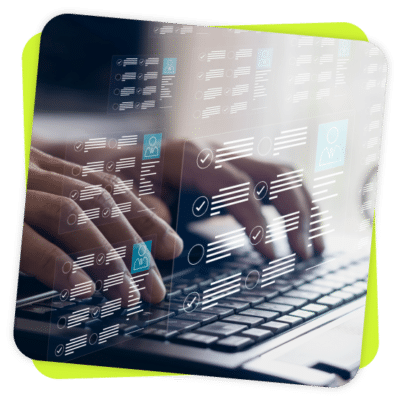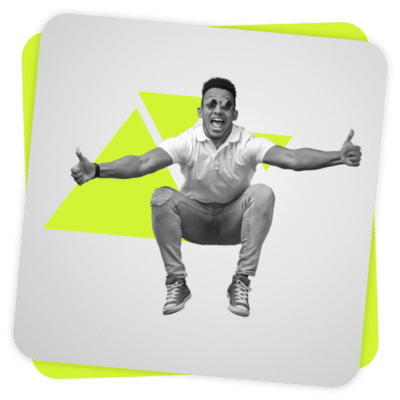Agentic AI Use Cases in HR: How Rival is Leading the Way
Poornima Farrar
Chief Product Officer
From Theory to Practice: Building What Agentic AI Promised
For all the anxiety out there about AI, HR is surprisingly on board. Early adopters of AI, HR teams want it to work — not just in theory, but in their actual workflows.
Every platform promises “AI-powered” features. Every demo drops the term “agentic.” But when HR asks a simple question — what is the AI actually doing? — the answers get vague fast.
The answer matters here, because as AI becomes more embedded in HR technology, so do the risks: feature sprawl without utility, automation without oversight, and systems that move fast but understand little. Clarity and efficacy are important.
In our last post, we laid out the blueprint: a dual-agent model that distinguishes between knowledge agents (which understand) and automation agents (which act). It’s a vision of AI HRIS that partners with humans to make smarter decisions, streamline experiences, and adapt in real time.
But vision is only part of the equation. The other part is execution.
That’s where this post picks up. Let’s talk about how Rival is deliberately designing AI technology with HR teams in mind, and how we’re bringing the dual-agent model to life across use cases that matter.
If you’re just joining the conversation, you can catch up on our foundational thinking here:
- Blog 1: The Evolution of AI in HR: From Automation to Agentic AI
- Blog 2: Busting Four Myths About AI in HR
- Blog 3: Agentic AI in HR: The Two Engines of Knowing and Doing
Now, let’s get to what our AI vision looks like in action.
The Rival Approach: Why We’re Taking the Dual-Agent Path
AI doesn’t belong in HR because it’s trendy or powerful. (Though of course it is.) It belongs because HR deals with complexity, and complexity demands support that’s both intelligent and intentional.
At Rival, we knew from the start that a one-size-fits-all automation layer wouldn’t cut it. HR work is both operational and relational. It involves policy and people, compliance and care. So we built toward a model that could support that duality, not just with speed, but with context and coordination.
That’s why we separate what AI knows from what it does.
- Knowledge agents synthesize information across tools and systems to surface insight and provide guidance, without needing a human to dig.
- Automation agents act on that insight: executing workflows, triggering next steps, and reducing the administrative burden that slows HR down.
Crucially, these agents are designed to work in tandem — so the moment something is understood, something useful can happen next. No toggling, no task-switching, no chasing answers across platforms.
What Agentic AI Use Cases We’re Prioritizing, and Why
Agentic AI can’t be a party trick. It needs to solve real problems. At Rival, we’re focused on building practical, high-impact use cases that deliver immediate value while laying the foundation for more adaptive, intelligent HR systems over time. This is where the dual-agent model moves from theory into the real world.
We’re beginning where AI can meaningfully reduce friction for three core groups: HR practitioners, hiring managers, and employees.
For HR Practitioners
- Knowledge agents help HR see what’s really happening across the system, without needing to run a report or click through five dashboards. For example, HR can inquire about onboarding delays by role, department, or location, along with the bottlenecks causing them.
- To close the loop, automation agents can help execute complex tasks that usually require human work. Sequential processes — like verifying I-9 documents, opening IT tickets, and triggering welcome emails — can happen automatically, with less risk of missed steps.
- In recruiting, our AI identifies strong-fit candidates across a network of 700M+ profiles and generates tailored outreach messages designed to resonate, not spam.
For Managers
- Managers are often responsible for talent outcomes but hampered by outdated systems. Our knowledge agents surface timely nudges, such as upcoming reviews, team PTO overlaps, or missed onboarding milestones. These aren’t generic alerts; they’re prioritized and contextualized, so managers get the right prompt at the right time.
- Paired with automation, this becomes even more powerful. A manager initiating a leave request no longer needs to coordinate across HR and payroll — the system routes documents, notifies the right stakeholders, and ensures coverage is accounted for.
- AI-generated job descriptions also help managers move faster and more confidently when opening new roles, tailored to their team’s voice, goals, and role-specific needs.
For Employees
- Employees don’t want to “open a case.” They want to get answers, complete tasks, and move on. That’s what our knowledge agents are built to enable: clear, conversational responses to common questions — from benefits eligibility to compliance due dates — that take into account the employee’s location, manager, and role.
- Meanwhile, automation agents also support seamless self-service. Submitting a form, uploading a document, or registering for training happens with minimal friction, and often proactively. For instance, the system can recommend upskilling content based on the employee’s current role and target path, or flag a certification gap before it delays a promotion.
These aren’t edge cases or R&D experiments. These are real agentic AI use cases in HR — designed to elevate trust, reduce manual work, and deliver value across the employee lifecycle.
What’s Coming (and How We’re Rolling It Out)
Rival’s approach to AI development is guided by two principles: build what’s usable now, and design for what’s possible next. The roadmap reflects that posture, grounded in today’s needs, but always moving toward a more seamless, adaptive experience.
- In the short term, we’re expanding the footprint of our knowledge agents across HR and manager workflows. We’re also introducing customizable autonomy controls so HR teams can decide how much the AI should handle independently versus where it should pause for review. And for employees, we’re embedding conversational support directly into the portal experience, giving them fast, accurate answers without tickets or delays.
- Looking slightly ahead, we’re developing agent orchestration capabilities, where knowledge and automation agents coordinate with each other to complete more complex tasks. That could mean a knowledge agent identifying that an employee hasn’t completed training, and an automation agent updating the manager, adjusting the onboarding schedule, and triggering reminders.
- Long term, our aim is ambient intelligence. That means AI that’s always on, always learning, but never intrusive. A system that knows when to act, when to ask, and when to stand aside. A system that reflects HR’s ethics, not just its processes. Moreover, by enabling agent-to-agent coordination across tools we plan on partnering across the entire HR ecosystem.
That’s what HR technology with AI should do. And it’s what Rival is building — not as a someday goal, but as a step-by-step reality.
5 Things That Make Rival Different
There’s no shortage of vendors promising AI recruiting software or smart assistants baked into HR platforms. But most of what’s out there is either retrofitted or overly narrow, built to automate a single task in a single tool.
Rival takes a different approach. Here’s how that shows up in practice:
- AI is native, not retrofitted.
We didn’t layer AI onto an old platform. Instead, we architected it into the foundation. Every workflow, insight, and agent is designed to think before it acts and align with human intent from the start. - We build for integration, not isolation.
Our platform works across your HR ecosystem, not just inside our walled garden. Knowledge agents pull insights from multiple systems without switching platforms. Automation agents move tasks across tools like ATS, HCM, or ITSM, keeping work in motion across the whole stack. - We lead with trust.
Our AI never uses customer data for training. It’s fully compliant with GDPR, CCPA, and EEOC standards, and built to reduce bias by removing identifying information from decision-making flows. - Humans stay in the loop.
HR leaders can set autonomy levels, review decisions, and shape how agents operate, with full transparency and control at every step. - We focus on flow, not flash.
Many platforms chase features. We have plenty of features, but prioritize the connective tissue — the real-world movement between people, tools, and outcomes. That’s what makes AI most useful, usable, and worth trusting.
These values are embedded into how we design, build, and deliver every feature on our roadmap, because the way AI gets built matters just as much as what it’s built to do.
Building Intelligently, Acting Responsibly
We believe agentic AI has the power to change how work gets done, and how people feel doing it. But only if it’s designed with care, rolled out with clarity, and built to reflect the values that define HR at its best.
That’s why our Rival roadmap is built deliberately: aligning every use case with the realities HR teams face, the responsibilities they carry, and the trust they have to uphold.
Want a closer look?
If you’re exploring HR technology with AI that goes beyond check-the-box automation, we’d love to show you how Rival can help. Book a conversation with our product team.


















